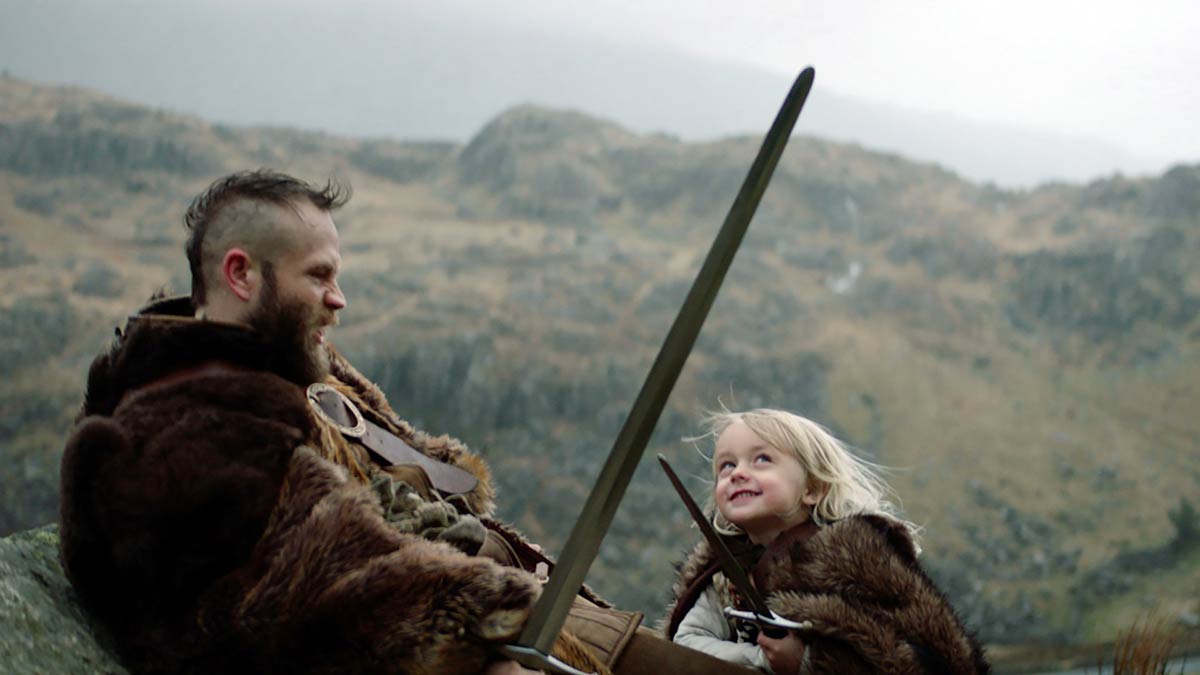Death will come for all of us at some point, but communicating the ideas of impermanence to children is a whole other scary, frightening bag. “Where do we go when we die?” That’s the concern of actor/director/writer Mark Webber’s personal and moving, “The Place of No Words,” an imaginative, funny, and sad examination of conceptualizing death to a child, that can really only come from a tortured parent’s perspective. Thoughtfully made, a little morose, and at times a little baffling, Webber’s film—full of fantastical sequences using escapist make-believe as a language to cope with hard truths—is ultimately a provocative meditation on grief and finding strength through the resilience of children. An intimate portrait that explores the relationship between a father and son— the former dealing with a terminal diagnosis—the film seemingly draws from everything from the whimsy of “Where the Wild Things Are,” the abstract beauty of “The Science of Sleep,” the grief provoked escapism of “A Monster Calls,” to the visual splendor “The Fall” and how it masks real pain.
READ MORE: The 100 Most Anticipated Films Of 2019
Regardless of influences, Webber’s film also appears to also act as a form of self-help therapy for the director himself and how to grapple with the gutting idea of his family (he has four kids) coping when he’s gone. In the wrong hands, this becomes a hugely self-indulgent, self-important work: how could they possibly go on without me? But Webber’s film is clearly built from a bursting-at-the-seams love for his kids and the self-realization that pain will come to your children’s life at some point, no matter how hard you hold on to protect them.
READ MORE: Tribeca Film Festival: 15 Must-See Movies
The plot loosely follows the father (Webber) and son Bodhi (Bodhi Palmer, Webber’s son) as well as Bodhi’s mother (Teresa Palmer, Webber’s wife) as they process the father’s terminal illness and what that means for them as a family with the time that they have left. Webber allows the viewer into a world of the father and son’s make-believe adventures which mirror the tough discussions centered around explaining death. Bodhi’s reluctant to hear about something this upsetting and in the abstract, this imaginative playtime allows the three-year-old to contend with the finality of death through his inquisitive nature and endlessly imaginative eyes.
The magical realism is bare bones in execution, refusing to rely on otherworldly or expressive imagery as a means to hook mainstream audiences. Instead, much of the magic that comes from the film is in the familial bond and natural wonderment the scenery produces. Cinematographer Patrice Lucien captures this whimsical delirium with a soft focus that curves at the edges and allows everything to emulate a memory, fleeting in the mind of a toddler but everlasting to everyone else who understands this venture into woods with forest fairies could be their last.
“The Place of No Words” is lyrical, emotional, and intuitive, but also meandering in its ephemeral flitting from reality to the imaginary world. Introspective in nature, it might not be an easy sit for mainstream audiences, but experientially and emotionally, the imagery and melancholy mood contains a lot of poignancy even when the movie wanders.
There’s somewhat of a dissonance throughout: the marriage of homemade-style filmmaking, over-the-shoulder intimacy and fantastical elements— witches, fairies, trolls, etc. makes an uneven ride at times. Peering behind the curtain of make-believe and seeing what’s really happening outside of the imagination of the child—it can take a moment to adjust to the costuming and monster suits that stand stark against such an ordinary world.
But the lived-in chemistry of the family, the movie’s fully-felt good intentions, and its overall emotional authenticity, far outstrips its flaws. Palmer and Webber enhance the feelings of truthfulness to the point where just lounging in bed or held up in a hospital room are just as effective as the otherworldly.
Despite the frigid settings covered in moss greens and overcast gray skies (think “Game of Thrones” in a cold and harsh Viking setting), there’s an unwavering warmth that makes its story of the family all the more lasting and poignant. “The Place of No Words” is aided greatly in the give and take Palmer and Webber have with one another and the way they clearly let Bodhi act his actual age, rather than forcing him into any kind of contrived precocious role.
The Webber family is clearly a little touchy-feely, spiritual, Buddhist-y, etc., but never are their beliefs— open, honest and inquisitive — cloying or hokey. Their genuineness of spirit, their sense of compassion and tenderness as empathetic human beings open to all kinds of possibilities, is as aromatic as the incense that probably burns somewhere in their modest apartment. “The Place of No Words” doesn’t pretend to know the answers about death and neither does the family.
But what makes the film such a finely tuned, resonant piece of filmmaking is that it goes beyond the question, far more interested in what it means to ask these kinds of questions and explore grief through love than strictly the pain of loss. Organic, never heavy-handed and only missing some cohesion (the second act rambles a little) before coming through with a strong finish, “The Place of No Words” is a beautiful and expressive piece of filmmaking from Webber. He’s had a long, somewhat ignored career so far as a director—this is his fifth feature film—but one gets the deep sense, it’s the personal fulfillment and shared memories with family, not the recognition, that matters most. [B+]
Follow along with all our coverage from the 2019 Tribeca Film Festival here.





